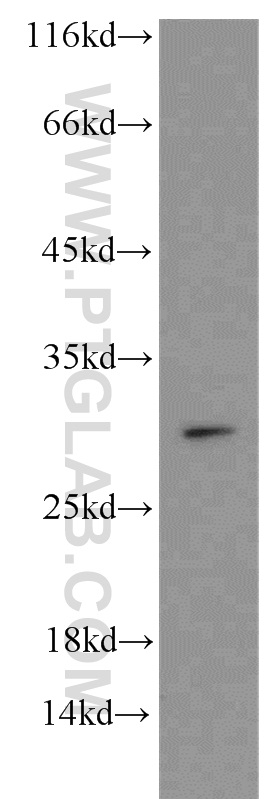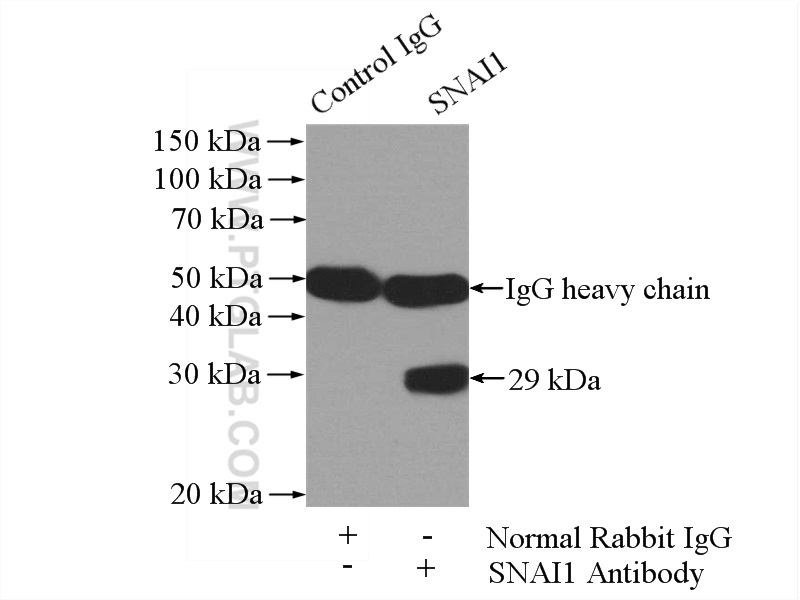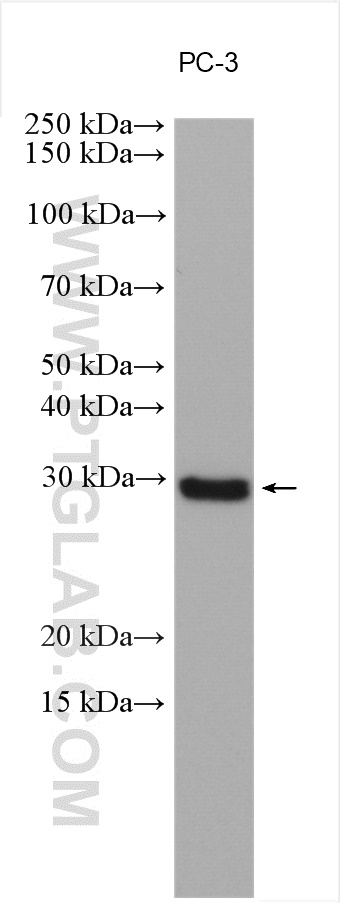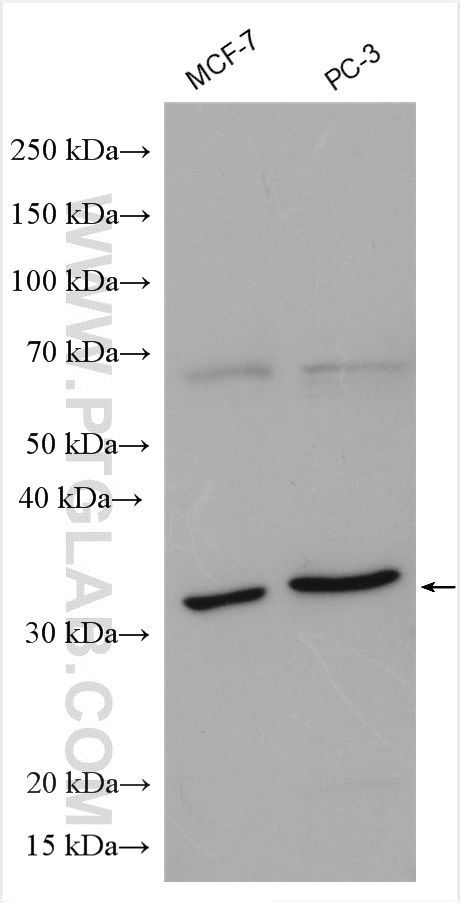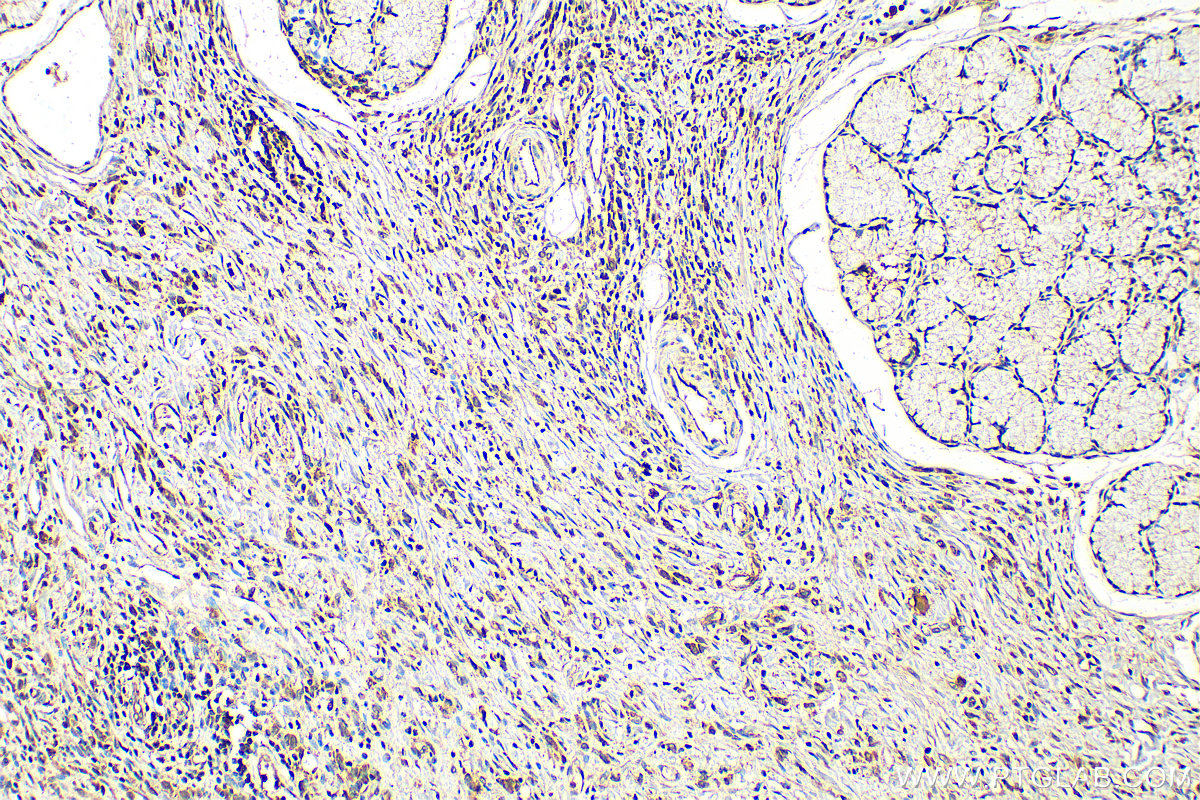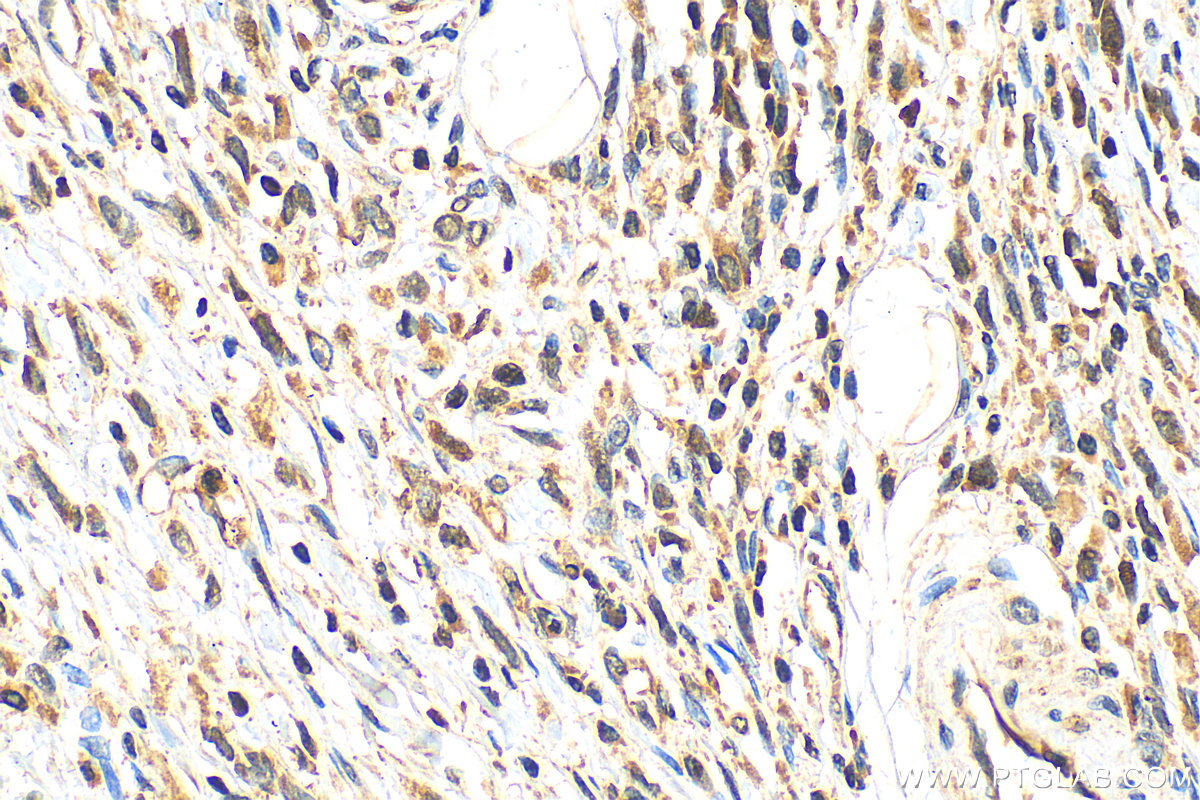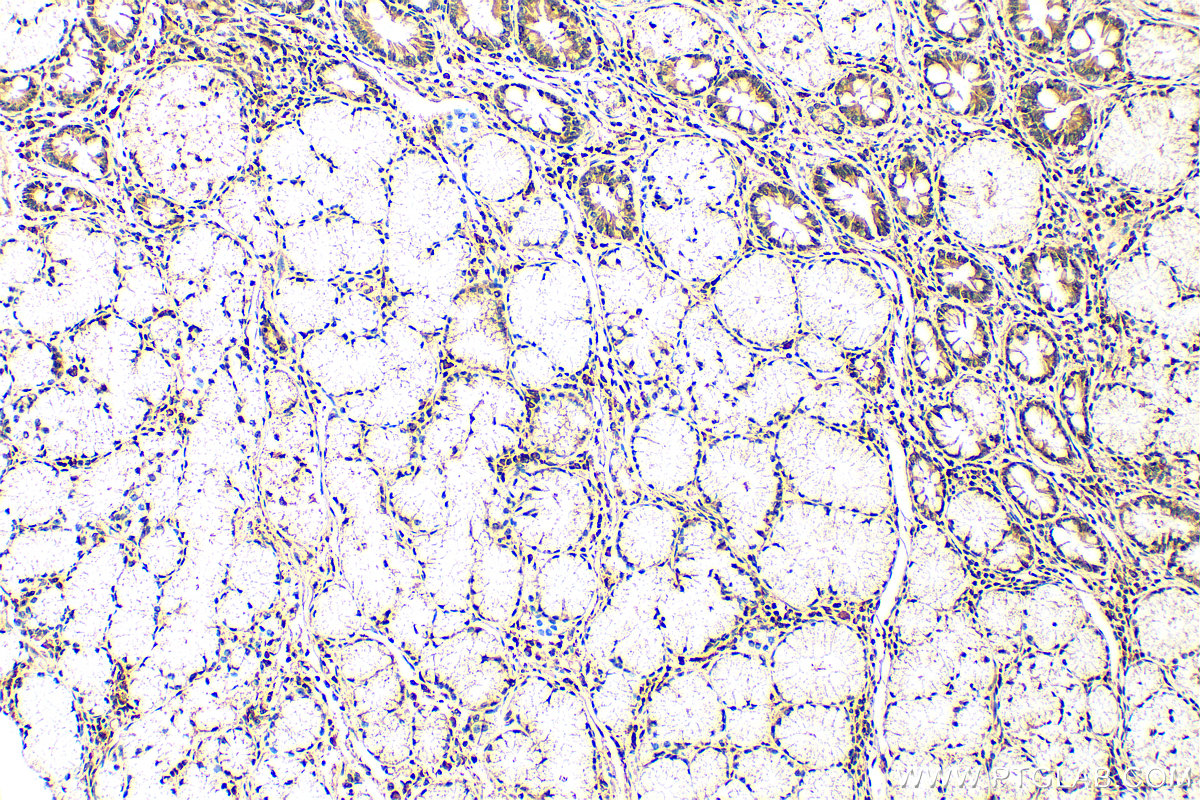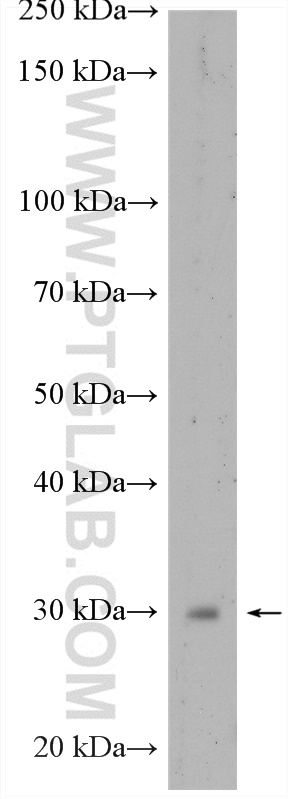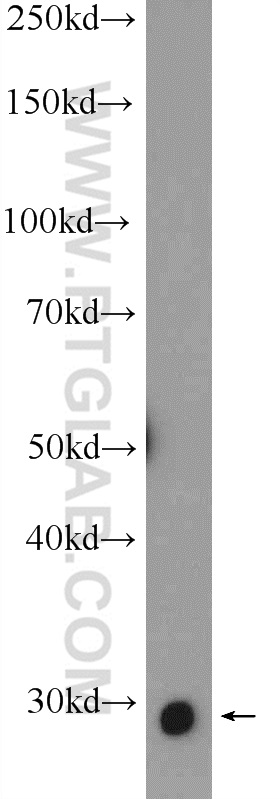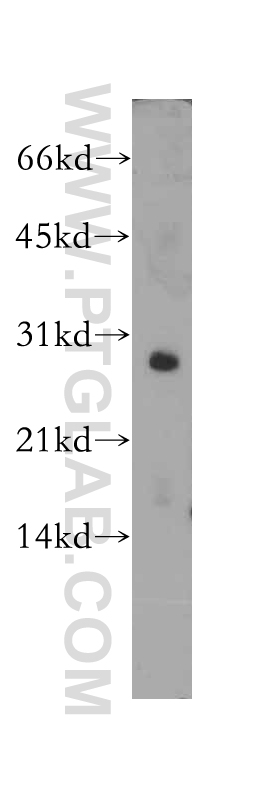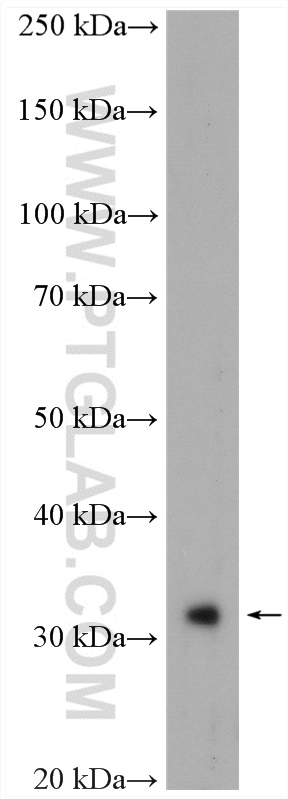验证数据展示
经过测试的应用
| Positive WB detected in | mouse heart tissue, PC-3 cells, BxPC-3 cells, human heart tissue, COLO 320 cells, MCF-7 cells |
| Positive IP detected in | MCF-7 cells |
| Positive IHC detected in | human stomach cancer tissue Note: suggested antigen retrieval with TE buffer pH 9.0; (*) Alternatively, antigen retrieval may be performed with citrate buffer pH 6.0 |
推荐稀释比
| 应用 | 推荐稀释比 |
|---|---|
| Western Blot (WB) | WB : 1:500-1:1000 |
| Immunoprecipitation (IP) | IP : 0.5-4.0 ug for 1.0-3.0 mg of total protein lysate |
| Immunohistochemistry (IHC) | IHC : 1:50-1:500 |
| It is recommended that this reagent should be titrated in each testing system to obtain optimal results. | |
| Sample-dependent, Check data in validation data gallery. | |
产品信息
13099-1-AP targets SNAI1 in WB, IHC, IF, IP, CoIP, ChIP, ELISA applications and shows reactivity with human, mouse, rat samples.
| 经测试应用 | WB, IP, IHC, ELISA Application Description |
| 文献引用应用 | WB, IHC, IF, IP, CoIP, ChIP |
| 经测试反应性 | human, mouse, rat |
| 文献引用反应性 | human, mouse, rat, goat |
| 免疫原 |
CatNo: Ag3723 Product name: Recombinant human SNAI1 protein Source: e coli.-derived, PGEX-4T Tag: GST Domain: 1-264 aa of BC012910 Sequence: MPRSFLVRKPSDPNRKPNYSELQDSNPEFTFQQPYDQAHLLAAIPPPEILNPTASLPMLIWDSVLAPQAQPIAWASLRLQESPRVAELTSLSDEDSGKGSQPPSPPSPAPSSFSSTSVSSLEAEAYAAFPGLGQVPKQLAQLSEAKDLQARKAFNCKYCNKEYLSLGALKMHIRSHTLPCVCGTCGKAFSRPWLLQGHVRTHTGEKPFSCPHCSRAFADRSNLRAHLQTHSDVKKYQCQACARTFSRMSLLHKHQESGCSGCPR 种属同源性预测 |
| 宿主/亚型 | Rabbit / IgG |
| 抗体类别 | Polyclonal |
| 产品类型 | Antibody |
| 全称 | snail homolog 1 (Drosophila) |
| 别名 | Protein sna, Protein snail homolog 1, SLUGH2, SNA, SNAH, SNAI1, snail homolog 1 (Drosophila), SNAIL1, Zinc finger protein SNAI1 |
| 计算分子量 | 264 aa, 29 kDa |
| 观测分子量 | 29-35 kDa |
| GenBank蛋白编号 | BC012910 |
| 基因名称 | SNAI1 |
| Gene ID (NCBI) | 6615 |
| RRID | AB_2191756 |
| 偶联类型 | Unconjugated |
| 形式 | Liquid |
| 纯化方式 | Antigen affinity purification |
| UNIPROT ID | O95863 |
| 储存缓冲液 | PBS with 0.02% sodium azide and 50% glycerol, pH 7.3. |
| 储存条件 | Store at -20°C. Stable for one year after shipment. Aliquoting is unnecessary for -20oC storage. |
背景介绍
SNAI1, a member of SNAI1 family of protein, participates in the epithelial to mesenchymal transition(EMT) and formation and maintenance of embryonic mesoderm. The snail family share a common structural, that a highly conserved C-terminal region containing a zinc finger transcription factor. SNAI1 interacts with other corepressor, such as Ajuba, PRMT5 and SIN3a or HDAC1 and 2, to repress the target gene. As the phosphorylation modification of SNAI1 protein, the range of molecular weight of SNAI1 is about 25-30 kDa (PMID: 22276203 ). Once phosphorylated (probably on Ser-107, Ser-111, Ser-115 and Ser-119) it is exported from the nucleus to the cytoplasm where subsequent phosphorylation of the destruction motif and ubiquitination involving BTRC occurs.
实验方案
| Product Specific Protocols | |
|---|---|
| WB protocol for SNAI1 antibody 13099-1-AP | Download protocol |
| IHC protocol for SNAI1 antibody 13099-1-AP | Download protocol |
| IP protocol for SNAI1 antibody 13099-1-AP | Download protocol |
| Standard Protocols | |
|---|---|
| Click here to view our Standard Protocols |
发表文章
| Species | Application | Title |
|---|---|---|
Biomater Res Treatment of bladder cancer by geoinspired synthetic chrysotile nanocarrier-delivered circPRMT5 siRNA. | ||
Theranostics FSH induces EMT in ovarian cancer via ALKBH5-regulated Snail m6A demethylation | ||
Nat Commun Symmetry breaking of tissue mechanics in wound induced hair follicle regeneration of laboratory and spiny mice. | ||
EMBO J SIRT5-mediated desuccinylation of PPA2 enhances HIF-1alpha-dependent adaptation to hypoxic stress and colorectal cancer metastasis | ||
Cancer Res An in vivo CRISPR screen identifies that SNRPC promotes triple-negative breast cancer progression |
